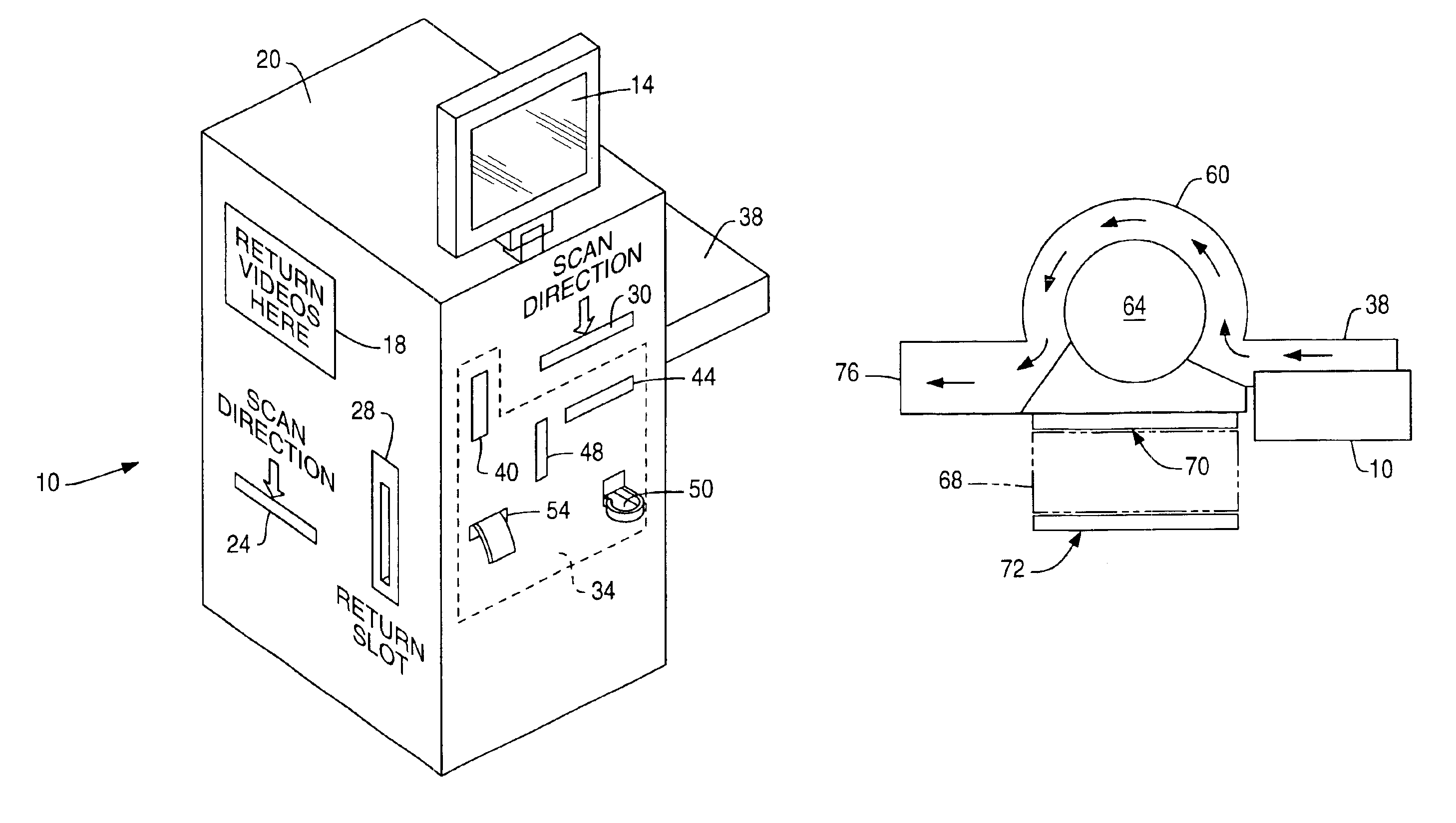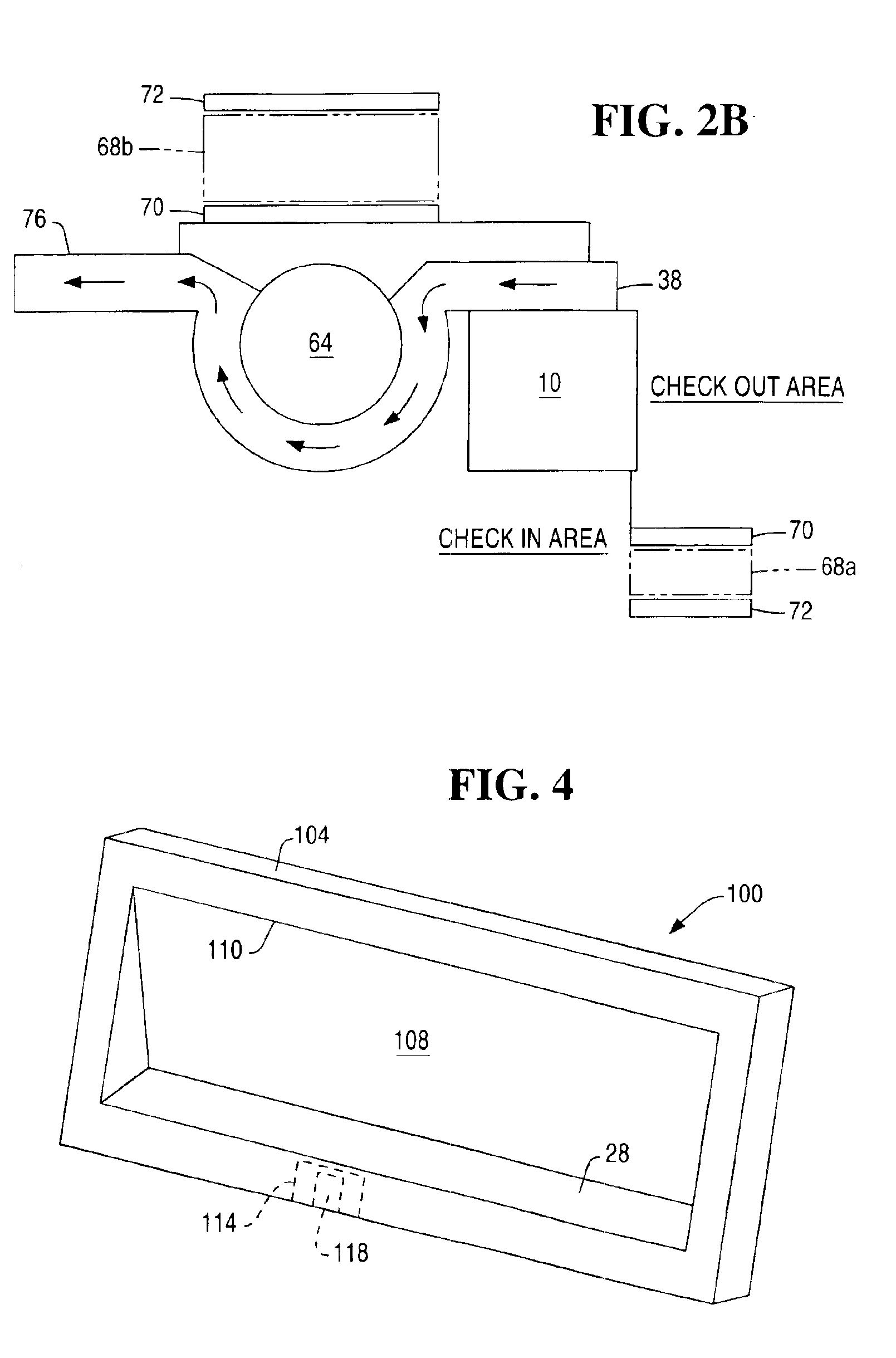System and method for self-checkout of video media in a rental store
a video media and rental store technology, applied in the field of self-checkout of video media in rental store, can solve the problems of reducing the throughput of customers, long lines and consumer frustration at the checkout counter, and reducing the likelihood of rental article us
- Summary
- Abstract
- Description
- Claims
- Application Information
AI Technical Summary
Benefits of technology
Problems solved by technology
Method used
Image
Examples
Embodiment Construction
A checkout station that may be used for self-checkout and check-in of video media is shown in FIG. 1. Checkout station 10 may include a display screen 14 for displaying instructions to consumers checking out video media and display screen 18 for displaying instructions to consumers checking in video media. Although screen 14 is shown in a panel mounted to the top of housing 20 and screen 18 is depicted as being mounted within a cutout in housing 20, this arrangement is merely illustrative and other placements of instruction display indicia may be used. In general, checkout features of station 10 are mounted on one face of housing 20 while those components directed to the check-in of video media are mounted on a second face of housing 20. Orientation of the components for performing the two functions of station 10 on different faces of housing 20 is preferred so that the two functions may be spatially separated. This spatial separation allows consumers exercising the two functions of...
PUM
 Login to View More
Login to View More Abstract
Description
Claims
Application Information
 Login to View More
Login to View More - R&D
- Intellectual Property
- Life Sciences
- Materials
- Tech Scout
- Unparalleled Data Quality
- Higher Quality Content
- 60% Fewer Hallucinations
Browse by: Latest US Patents, China's latest patents, Technical Efficacy Thesaurus, Application Domain, Technology Topic, Popular Technical Reports.
© 2025 PatSnap. All rights reserved.Legal|Privacy policy|Modern Slavery Act Transparency Statement|Sitemap|About US| Contact US: help@patsnap.com



